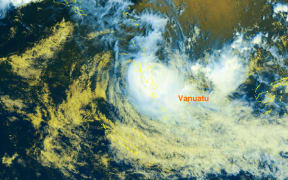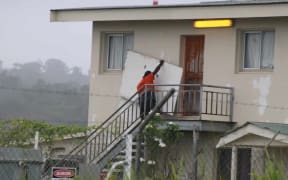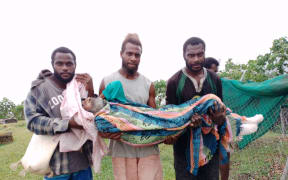
Severe Tropical Cyclone Lola battering Vanuatu on Wednesday. Photo: Supplied / Vanuatu Meteorology
Severe Tropical Cyclone Lola, which ripped across Vanuatu this week leaving significant damage in its wake, has become the earliest category 5 system on record for the Southern Hemisphere.
The out-of-season cyclone formed on Sunday and hit its peak on Tuesday with gusts up to 295 kilometres per hour - enough to meet the threshold of the highest cyclone category, a category 5.
Previously, the earliest category 5 system recorded was twice on a December 5 - both by Australian cyclones Joan in 1975 and Graham in 1991.
So what allowed Lola to become so strong so early on?
Right place, right time
Australia's Bureau of Meteorology tropical cyclone meteorologist Joe Courtney said the cyclone's early season rise to category 5 came against the odds.
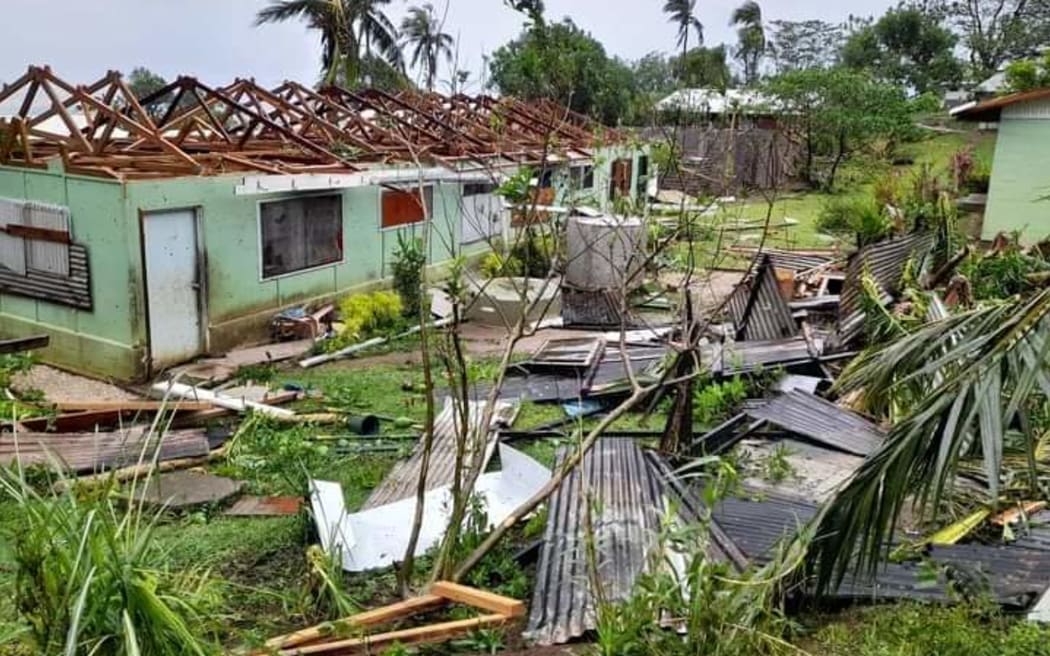
Ranwadi College on the island of Pentecost in Vanuatu was severely damaged by Cyclone Lola. Photo: Twitter.com/@yumitalem
Typically, the cyclone season runs from November until April when the monsoon trough - a seasonal wind regarded as a breeding ground for tropical cyclones and rain - makes its seasonal transition into the Southern Hemisphere.
But when the monsoon trough is near the equator, as it is now, it is difficult for cyclones to form.
This is because the trough is less active, often spilt between two hemispheres, and because the general wind patterns around the equator make it hard for cyclones to get their initial wind rotation.
In the case of TC Lola, however, Courtney said a "westerly wind burst" near the equator was able to give the cyclone its initial kick start.
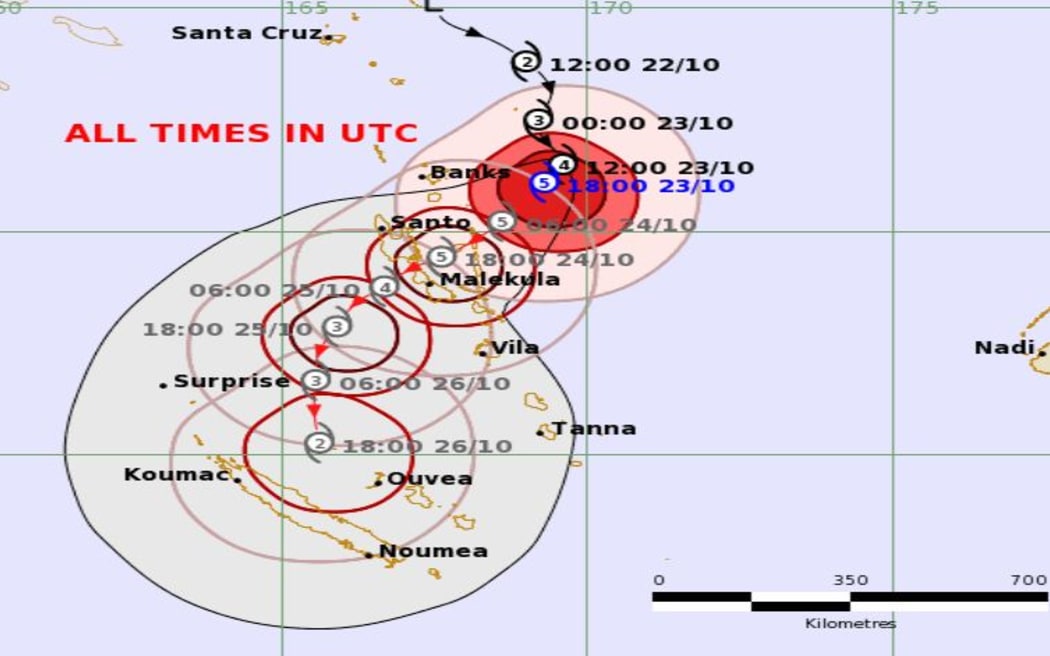
Against the odds, TC Lola found a 'sweet spot' of environmental conditions that allowed it to thrive. Photo: Fiji Meteorological Service
It also happened to be born in a "sweet spot" of environmental conditions that kept the cyclone alive - something other cyclones which have formed outside the normal season have often come up against.
"We've had out-of-season cyclones where it's just become a cyclone but it doesn't have the impetus to keep going," he said.
These favourable conditions included warm waters, low wind shear - which allows a cyclone's cylinder shape to grow tall through the atmosphere and strengthen - a moist atmosphere, and a jet stream in just the right location.
Courtney said this combination that TC Lola found ultimately boiled down to chance.
"If this had of happened last week or next week you could say it wouldn't have got to category 5," he said.
TC Lola has now weakened to below cyclone strength.
But it has left a hefty clean-up in northern rural areas of Vanuatu, with footage of homes severely damaged by the cyclone, crops destroyed, trees uprooted, and communication down in many provinces.
Port Vila, the capital of Vanuatu, appears to have escaped unscathed.

Destruction caused by Tropical Cyclone Lola on Merelava Island in Vanuatu's Torba province. Photo: RNZ Pacific / Hilaire Bule
The clean-up comes just seven months after the country was battered by "evil twin" cyclones which affected about 80 percent of the country's population.
Other October cyclones
As far as official records go, TC Lola is in the books.
However, there have been several October tropical cyclones before, including some which Courtney said may have been of comparable strength.
For instance, he said the deadly Hurricane Bebe in 1972 - the last system to be termed a "hurricane" in the Southern Hemisphere - "could have been a category five", but there was no satellite evidence to prove it.
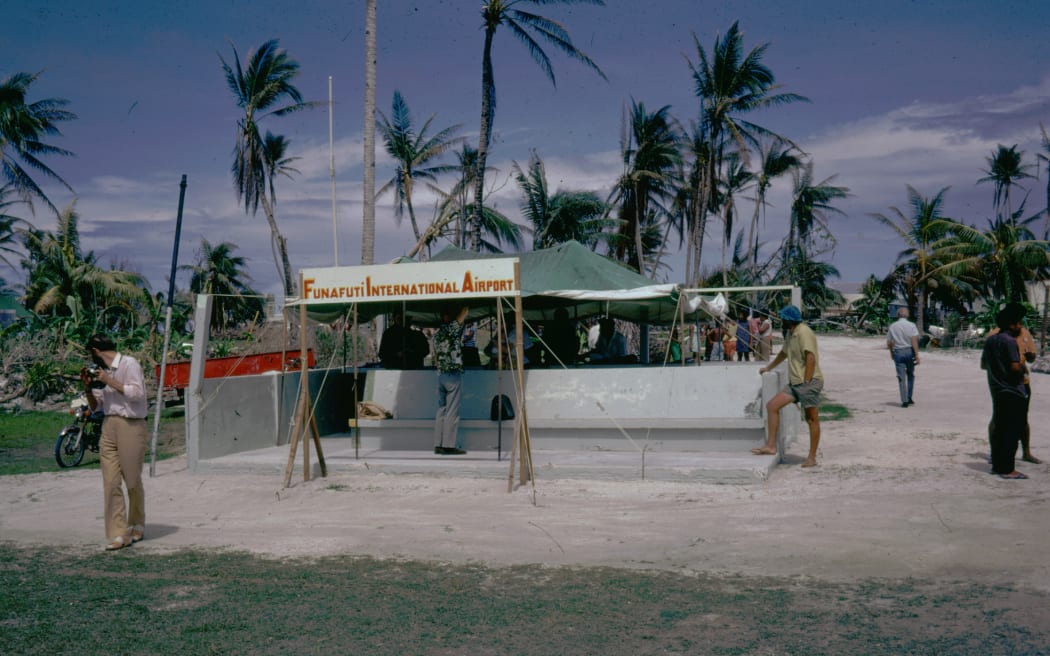
Funafuti Airport in Tuvalu after Hurricane Bebe in November 1972. Photo: Creative Commons / Richard Moorby
October cyclone Xavier in Fiji in 2006 also may have been as strong as Lola at times, according to Courtney, though it was officially classed as category 4.
"The difference is that Xavier moved on a south-easterly track over open waters to the east of Vanuatu whereas Lola turned south-west over Vanuatu."
Trend of earlier, intense cyclones
The role climate change played on TC Lola is not yet known.
But the early arrival of an intense cyclone is a part of a broader trend being observed around the globe.
A recent paper published in Nature found intense Southern Hemisphere cyclones are forming about two weeks earlier now than they did in the 1980s.
This was also evident in the Northern Hemisphere.
The research attributed the earlier shift in intense cyclones to human-caused climate change which was allowing ocean waters to warm and become more favourable for supporting cyclones earlier in the season.
* This story was first published by ABC.

